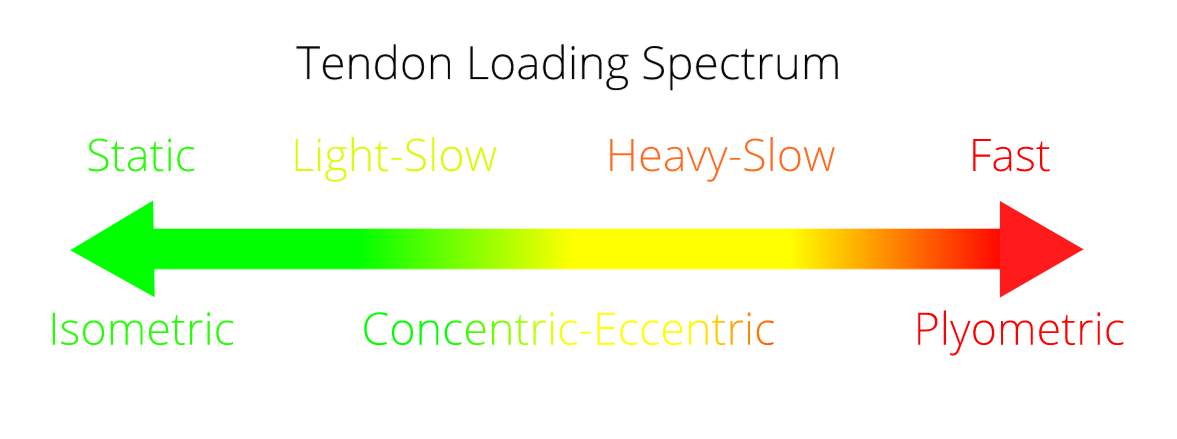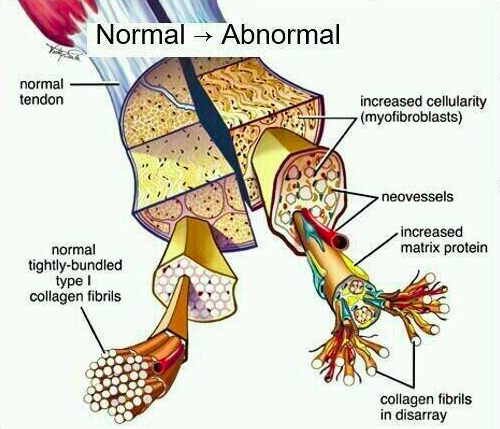Subscribe to The Adaptive Zone Podcast…
“Tendons hurt when they are not strong enough to do their job”
Tendon pain usually affects runners in the Achilles tendon at the heel or the patellar tendon at the knee. It also commonly affects swimmers in the rotator cuff at the shoulder.
If you have pain in one of these areas during or after running/swimming you may have “tendinopathy”. In this episode, we’re going to learn how to fix it.
Would you like your running or triathlon questions featured in a future episode?
Just click the button to leave me a voicemail…
Tendon Pain: Capacity vs Demand
- “Tendons hurt when they are not strong enough to do their job”
- If the demands placed on a tendon are lower than it’s capacity, it won’t hurt
- If the demand placed on a tendon are higher than it’s capacity, it will hurt
- An elite athlete has extremely strong tendons, but may ask even more than they can tolerate, so she develops pain
- A sedentary person has extremely weak tendons, but may not ask much of them at all, so he will not develop pain
- Pain emerges when the demands exceed the capacity
Treatment of tendon pain
- When I describe this to a client and ask what they think we should do about it I always get one of two answers:
- “Reduce the stress on the tendon”
- “Increase the capacity of the tendon”
- That’s right. In rehab, we do both.
- Temporarily reduce the stress on the tendon (less running volume, less fast running, less plyometrics)
- Spend 6-12 weeks increasing the strength/capacity/load tolerance of the tendon
- If you’re wondering about other treatments like injections, electrotherapy, massage, stretching…
- Ebonie Rio: A discrepancy between load and capacity is what gives tendon pain. Injections don’t increase capacity
- You should ask yourself “would any of these increase the capacity of my tendon?”
- While there does seem to be some low-quality evidence supporting these interventions, there is far more research supporting exercise for tendon rehab
Load Tolerance
- Demands are placed on the tendons in the form of mechanical stress
- Sitting on the couch, no load is placed on the Achilles tendon
- Standing still places a static or isometric load on the tendon, which is easy to tolerate
- Walking places a light-slow load on the tendon, which is a little harder to tolerate and will require more capacity to tolerate stress
- Heavy calf raises place a heavy-slow load on the tendon. This is hard for the tendon to tolerate and requires a high capacity to tolerate stress
- Running places a fast or plyometric load on the tendon. This is extremely hard on the tendon and requires a very high load-tolerance / capacity

- Strengthen the doughnut, not the hole
- In the last episode, we discussed the collagen disorganization
- It may irreversible, so those little “gaps” in the tendon seen on USS may remain
- However, if we make the remaining collagen stronger than it was, the net “strength” or “capacity” of the tendon can be brought to a level above the demands being placed on it, so it won’t hurt

- While strengthening the tendon cause a rupture
- Of all of the studies done on tendon strengthening, I’ve not heard of one incident of a rupture
- Degenerated tendons do rupture, however, this is usually during a squash game or a sprint session
- A rupture is the most extreme example of a tendon not being strong enough to do it’s job
- So the question remains, do you want to avoid anything that places a high stress on your tendon? Or do you want to make your tendon so strong it can’t be ruptured?
Tendon Strengthening
- Tendon loading spectrum
- Start at 3×15 Rep Max (or isometrics)
- Progress over 6-12 weeks
- Finish at 5×5 Rep Max (plus plyometrics)
- Achilles = calf raises with knee bent
- Patellar = rear lunge or split squat or quad curl
- Hamstring = SLD or hams curl
- Gluteal = side planks with leg lifts / monster walks / clams / Rear lunge
- Plyometrics = running, skipping, hopping, box jumps, box hops, tuck jumps, tuck hops